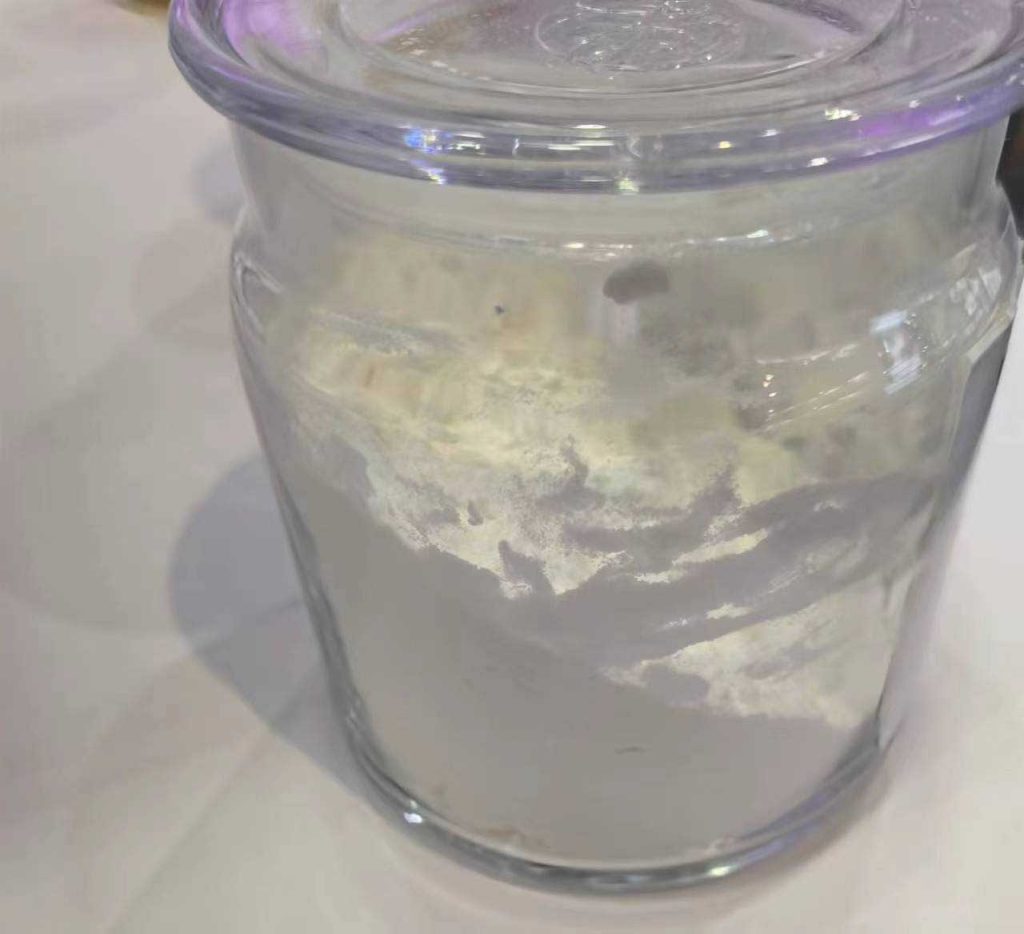Hydroxypropylmethylcellulose
The Role of Hydroxypropylmethylcellulose in Mortar
The function of hydroxypropylmethylcellulose in mortar is noteworthy due to its advantageous water retention characteristics. Hydroxypropylmethylcellulose is extensively utilized in diverse mortar formulations, including masonry, plastering, and ground leveling mortars, with the primary purpose of ameliorating mortar bleeding. Within cement mortar applications, hydroxypropylmethylcellulose primarily serves the dual roles of water retention and thickening. It contributes to elevating the plastic viscosity and cohesiveness of the mortar, thereby mitigating water migration and loss, while concurrently augmenting water retention capabilities.
The incorporation of an appropriate amount of water within the mortar is conducive to extending the hydration period of the cement. The water-holding capacity is directly correlated with the viscosity of the cellulose ether solution integrated into the mortar. Higher viscosity levels correspond to improved water-holding capacity. This characteristic is pronounced in hydroxypropylmethylcellulose which demonstrates a substantial thickening effect. It enhances the construction performance and workability of the mortar, thus facilitating smoother application processes.
Hydroxypropylmethylcellulose contributes significantly to bolstering the bonding strength of the mortar. This effect persists even when the mortar is subjected to elevated temperatures. Hydroxypropylmethylcellulose plays a pivotal role in maintaining adequate moisture levels within the mortar, even in high-temperature environments. This moisture preservation property is vital for ensuring the integrity of the mortar’s structural and adhesive properties under challenging conditions.
What is Mortar?
Mortar is also referred to as masonry. This is a fundamental bonding agent integral to construction processes. It is formulated through the amalgamation of cementing or binding materials, such as lime or cement, along with fine aggregates like sand, surki, sawdust, and hydroxypropylmethylcellulose. Water is an essential component in this mixture, facilitating the creation of a cohesive substance. The primary function of mortar is to establish robust connections between distinct building components, such as bricks and stones, by capitalizing on its binding properties.
Hydroxypropylmethylcellulose contributes to the distinctive qualities of the mortar mixture. By integrating hydroxypropylmethylcellulose into the mortar mixture, the compound’s water retention abilities are effectively enhanced. Hydroxypropylmethylcellulose’s thickening effect within the mortar mixture elevates the plastic viscosity and cohesion of the mortar, directly influencing its resistance to water migration and loss. The result is a heightened water retention capacity that extends the hydration period of the cement within the mortar.
Hydroxypropylmethylcellulose Features and Applications
Hydroxypropylmethylcellulose HPMC has distinct features that play a pivotal role in its applications within mortar formulations. These are the few of the key attributes that significantly impact mortar performance:
Water Retention and Plastic Viscosity
Water retention is profoundly influenced by the incorporation of hydroxypropylmethylcellulose. This cellulose derivative effectively enhances the capacity of the mortar to retain water. This feature contributes to the mitigation of water migration and loss from the mortar matrix. An optimal water-retaining environment is fostered, which has a direct bearing on the overall hydration process of the cement within the mortar. By extending the period during which water is available for cement hydration, the mechanical properties and durability of the resulting structure are favorably influenced.
HPMC’s influence on the plastic viscosity of mortar is equally noteworthy. By introducing hydroxypropylmethylcellulose into the mortar mixture, the plastic viscosity is heightened. This phenomenon imparts increased cohesiveness and resistance to water migration within the mortar. The elevated plastic viscosity complements the water retention feature, collectively contributing to the overall workability and application characteristics of the mortar.
Effect of HPMC on the Interstitial Solution of Cement Mortar
The interplay between hydroxypropylmethylcellulose and the interstitial solution within cement mortar is an aspect of considerable consequence. The presence of HPMC modifies the properties of the interstitial solution, engendering improved water-holding capacity and, consequently, enhanced hydration kinetics. This dynamic interaction directly influences the overall performance of the mortar, particularly its adhesion, mechanical strength, and resistance to environmental stresses.
Effect of HPMC on Hydration of Cement
Hydroxypropylmethylcellulose’s role in the hydration process of cement further substantiates its significance. By creating a favorable environment for water retention and influencing the plastic viscosity, HPMC indirectly facilitates prolonged and effective cement hydration. This extended hydration duration has a direct bearing on the mortar’s structural integrity and durability, resulting in a more robust final construction.
The Interaction Between HPMC and Cement Mortar
The interaction between hydroxypropylmethylcellulose and cement mortar is characterized by intricate mechanisms. HPMC’s molecular structure enables it to effectively interact with cement particles, enhancing the overall cohesion of the mortar matrix. This synergy is pivotal in ensuring the comprehensive distribution of HPMC throughout the mortar, thereby reinforcing its water retention and plastic viscosity properties.
Effects of Hydroxypropylmethylcellulose on the Cement-Based Building Material Mortar
The following are the effects of hydroxypropylmethylcellulose (HPMC) on cement-based building material, specifically different mortar formulations:
HPMC for Masonry Mortar
When integrated into masonry mortar compositions, hydroxypropylmethylcellulose contributes to improved water retention and enhanced plastic viscosity. This translates to a greater ability of the mortar to maintain moisture and resist water migration. The plastic viscosity of hydroxypropylmethylcellulose augments the cohesiveness of the mortar, further promoting its structural integrity.
Hydroxy Propyl Methyl Cellulose HPMC for Dry Mix Mortar
The significance of hydroxypropylmethylcellulose in dry mix mortars can be attributed in its key attributes that this compound imparts to dry mix mortars is the ability to modulate and enhance the curing process. By virtue of its water retention capabilities, hydroxypropylmethylcellulose facilitates a sustained moisture environment crucial for optimal cement hydration. This prolonged hydration period contributes to the development of desirable mechanical properties, thus ensuring the long-term durability and strength of the mortar.
The influence of hydroxypropylmethylcellulose extends to the workability of dry mix mortars. Its presence fosters a more pliable and manageable consistency, making the mortar easier to handle and apply. This enhanced workability is particularly valuable in construction scenarios where precision and uniform application are important.
HPMC for Joint Filler Mortar
One of the noteworthy attributes facilitated by hydroxypropylmethylcellulose is the thixotropic behavior exhibited by the joint filler mortar. Thixotropy refers to the property where a substance exhibits reduced viscosity under mechanical stress. In the context of joint filler mortar, this quality ensures that the mortar maintains a consistent and manageable viscosity during application, allowing it to adhere effectively to vertical surfaces and within gaps. The thixotropic nature of the mortar, partly influenced by hydroxypropylmethylcellulose, prevents slumping and ensures that the mortar remains in place without sagging, thus contributing to the structural integrity of the resulting joint.
Hydroxypropylmethylcellulose substantially contributes to the non-shrink attributes of the joint filler mortar. The non-shrink qualities are essential for ensuring that the mortar maintains its volume and remains tightly bonded within the gaps and joints as it cures. This characteristic is particularly crucial to guarantee a complete, high-strength bond between different sections of precast concrete units.
HPMC for Self-Leveling Mortar
Self-leveling mortar is a specialized type of mortar renowned for its ability to create even, smooth surfaces without requiring extensive manual leveling efforts. This mortar variant arrives in a pre-mixed form, necessitating the addition of water before its direct application.
One of the foremost advantages attributed to the presence of hydroxypropylmethylcellulose within self-leveling mortar lies in its capacity to augment the consistency and workability of the mixture. By modulating the flow behavior and viscosity of the mortar, HPMC contributes to the self-leveling nature of the material. This ensures that the mortar readily spreads across the surface, effectively filling depressions and voids, and ultimately yielding a uniform and level finish.
Hydroxypropylmethylcellulose enchances the bonding properties of the self-leveling mortar. The compound’s presence promotes a cohesive interaction between the mortar and the substrate, ensuring effective adhesion. This attribute is particularly significant in applications where the mortar is used as an underlayment or topping, where a strong bond between the substrate and the mortar is essential for achieving a durable and reliable finished surface.
What Factors Affect the Water Retention of Hydroxypropyl Methylcellulose HPMC ?
Homogeneity within the mixture emerges as a critical determinant of hydroxypropylmethylcellulose’s water retention. The uniform dispersion of HPMC particles throughout the mortar matrix is essential for ensuring consistent water absorption and retention properties.
Thermal gel temperature constitutes another noteworthy factor impacting Hydroxypropyl Methylcullulose HPMC’s water retention behavior. The thermal gel point, specific to each hydroxypropylmethylcellulose variant, signifies the temperature at which the compound forms a gel-like structure upon interaction with water. This gel structure facilitates the entrapment of water within the matrix, enhancing the overall water retention capabilities.
Viscosity is a prominent factor that influences the water retention characteristics of hydroxypropylmethylcellulose. The viscosity of the cellulose ether solution, created upon Hydroxypropylmethylcellulose’s interaction with water, directly affects its ability to retain water molecules. Higher viscosity levels correspond to improved water-holding capacity, as the solution can encapsulate water more effectively.
The fineness of hydroxypropylmethylcellulose particles significantly impacts its interaction with water and, consequently, its water retention capacity. Finer particles enable more thorough dispersion and interaction with water molecules, promoting greater water absorption and retention. Operating temperature also emerges as a relevant factor shaping Hydroxypropyl Methyl Cellulose HPMC’s water retention behavior. Fluctuations in temperature can influence the compound’s ability to form gel-like structures and interact with water molecules.
We expect to be your supplier of Hydroxypropylmethylcellulose HPMC. We would liek to supply you free samples and voluable infomation about our Hydroxymethyl Cellulose.


